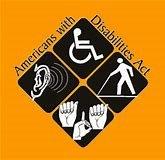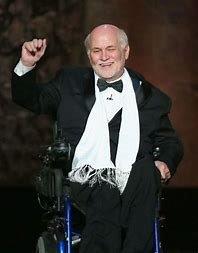 AMERICANS WITH DISABILITIES ACT – AN INTRODUCTION
AMERICANS WITH DISABILITIES ACT – AN INTRODUCTION
Welcome to FACTUAL FRIDAY everyone. With the death of President George H.W. Bush last week, there has been a lot of discussion about the AMERICANS WITH DISABILITIES ACT or the ADA. And, with good reason. For it was President Bush who three weeks after Independence Day in 1990, passed into law new legislation that would guarantee a different type of independence for disabled Americans and would change their lives forever.
This was, in the opinion of many scholars and historians, Bush’s most influential, important and lasting piece of legislation in his entire presidency. In fact, many believe the passing the ADA became the cornerstone of his personal and professional legacy.
Disabled Americans welcomed it as their personal Civil Rights Act. Finally, it appeared that those with disabilities would receive the same rights and considerations as those without disabilities.
But what were those rights and why were they so important?
Well, in my opinion no one states it better than renowned Vietnam War veteran and activist Ron Kovic. You may remember him from his best-selling autobiography and the Academy Award winning movie, “Born on the Fourth of July.”
Marine Corps Sergeant Kovic returned from Vietnam paralyzed from his chest down. Before the ADA, he recalls the lack of parking for the handicapped. Kovic himself drove a van with hand controls and a ramp on which he rolled his wheelchair in and out of the side of the vehicle. With no special parking permits or designated handicapped spaces, he always had to park “way far back in a parking lot” and often wheel himself a quarter of a mile or more to his destination.
He had to enter restaurants through the kitchen to avoid steps by the front entrances. He had constant trouble finding tables and doors that would accommodate his wheelchair. He was forced to relieve himself outside with the “puppy dogs” because he couldn’t use the public restrooms.
Yet, all that changed with the passing of the Americans With Disabilities Act.
So, let’s start by explaining what a disability is under the ADA and to whom the Act may apply.
- First, a disability is a physical or mental problem that substantially limits one of more of a person’s “major life activities.”
- Second, the ADA may apply to anyone who has a record of having such a problem in the past.
- Third, the ADA may apply to a person when other people think that person has such a problem, even if the person doesn’t actually have it.
Now, just what is a “major life activity” as determined by the ADA?
Here the list is long and not limited to the following:
- Caring for oneself
- Doing manual tasks
- Seeing
- Hearing
- Eating
- Sleeping
- Walking
- Standing
- Learning
- Breathing
- Thinking
Next, in order to address a disability as determined by the ADA, there are key provisions of the Act that offer protection and equal treatment for those affected. Called reasonable accommodations or modifications, here are just a handful.
- On the job, applications or testing procedures must accommodate a person’s fatigue or mobility difficulties.
- Special equipment for an employee with heat sensitivity, hearing or vision problems must be provided.
- Workspaces must have room for wheelchairs and motorized scooters.
- Public spaces must offer ramps and elevators for wheelchair access and for those with limited mobility, crutches, canes or walkers.
- Public bathrooms must provide sinks, toilets and stalls that accommodate the same persons with limited mobility and specialized equipment.
- Adequate handicapped parking spaces for all types of vehicles and curb cuts must be provided for easy access to and from buildings.
Of course, the ADA is much more complicated than the limited information provided above. But this will give you an introductory understanding of this important piece of legislation, which truly has changed the lives of those with muscular dystrophy, learning impairments, Down Syndrome, ALS, cerebral palsy, paralysis, epilepsy and many more.
 In fact, President Bush himself suffered from Parkinson’s disease, which is a progressive neurodegenerative disorder that eventually effects one’s social and work engagements to normal life routines and is, therefore, also listed as a disability under the ADA.
In fact, President Bush himself suffered from Parkinson’s disease, which is a progressive neurodegenerative disorder that eventually effects one’s social and work engagements to normal life routines and is, therefore, also listed as a disability under the ADA.
While the Americans With Disabilities Act doesn’t solve all the problems of our disabled and handicapped citizens, it certainly does help. It has improved the lives of an estimated 55 million people with disabilities, including the lives of several of my family members and friends who live with mobility, mental and physical challenges.
Moreover, the ADA has changed the way those with disabilities are perceived. It broke barriers. It opened the doors of opportunity that had been closed to the disabled community. It allowed those with disabilities to be seen as equals in every way by those not affected by disabilities. It provided legal recourse for discrimination against those with disabilities. And, it created an environment of awareness, acceptance and understanding for the disabled and the challenges they face every day.
So, well done Mr. President. I extend my personal thank you for this incredible contribution and commitment to our country, your foresight and your dedication to this cause. You will be missed.
And, to you my friends, I also extend my thanks and gratitude for joining me again. Until next time, stay in GOOD HEALTH and . . .
TAKE THE COURSE AND TAKE CHARGE!



Leave a Comment